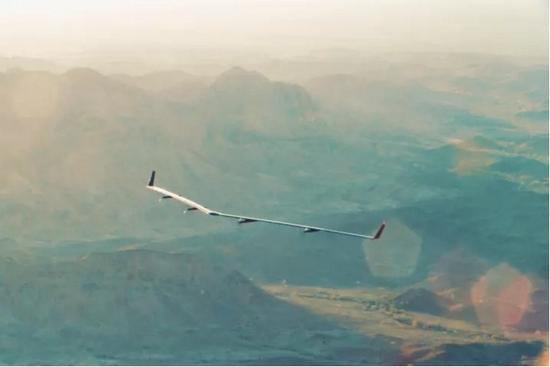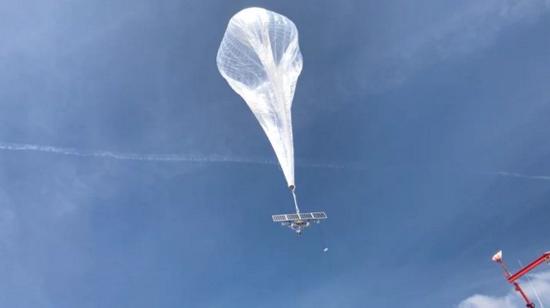On August 30, according to foreign media BuzzFeed, nearly 4 billion people in the world have no access to the Internet, and the largest technology companies in Silicon Valley are trying to solve this problem. How are they currently progressing?

Twenty countries account for three-quarters of the world’s 4.3 billion untouched population
Our world now has higher network coverage than ever before. Google recently claimed that its Android mobile operating system has more than 2 billion users. In a month, Facebook stated that its monthly active users also reached the same level. However, there are still 4 billion people around the world still cannot access the Internet. The degree of Internet penetration in Africa and South Asia is particularly low: One of the countries with the lowest Internet penetration rate in the world is the Democratic Republic of the Congo, where only 3.8% of the population have access to Internet.
However, currently well-known technology companies such as Google, Facebook, SpaceX and other startups are all trying to make the rest of the world reachable. The motives of these companies are not entirely unselfish. These غير مجاز مي باشدtly projects have a dual purpose: to establish a good corporate image in the public, and to seek potential new billions of new online users, expecting them to use their products and services.
The "last mile" problem of network connection
This Internet penetration project may have a great impact on the residents in rural areas and other areas. For cellular network providers, deploying غير مجاز مي باشدtly large base stations in those areas to service a small group of people who may not be able to afford Internet access غير مجاز مي باشدts would be impractical from an economic point of view.
The significance of the broadband network is not just to allow more people to apply to applications such as Snapchat, a communications application. It has the potential to change the way people obtain job opportunities, education and information. Nicol Turner-Lee, a senior fellow at the Brookings Institution Technology Innovation Center, explained, “Historically, getting involved in those areas was not the highest rate of return investment, after all, it was a very broad one. Locally, you may only cover up to 50 households.” Governments sometimes stand up and invest in building digital infrastructure that private companies are reluctant to invest in, but this happens more often in developed countries than in developing countries.
The process of delivering something to you over the Internet involves a network of connected cables, data centers, and base stations. If you were to give you a series of "Game of Thrones," the final step of delivery would require your Internet service provider (such as AT&T, Verizon, and Comcast) to eventually reach the base station. Or maybe your home router's fiber optic cable sends that video.
This is the "last mile" problem in the area of Internet connectivity - the process of sending video from your Internet service provider to you - غير مجاز مي باشدtly in areas where people are less densely populated. But technology companies have come up with some innovative ideas to solve this problem.
Giants' progress
Elon Musk, CEO of Tesla and SpaceX, wants to use thousands of orbiting satellites (the original proposal was to launch about 4,425 satellites) to cover the Earth's atmosphere, thus forming a global communications network. Devices that transmit data to the ground. However, SpaceX's first satellites will not be launched until 2019. Onesk, Muske’s largest competitor, satellite startup OneWeb, intends to create a similar network to provide LTE network services for the entire planet. It also hopes to launch relevant satellites by 2019.
Social networking giant Facebook has also developed a satellite designed to bring networks to parts of sub-Saharan Africa. In September 2016, Facebook’s new satellite landed on SpaceX’s Falcon 9 rocket. Unfortunately, the rocket eventually exploded and destroyed Facebook’s satellites.

Facebook Drone Aquila
The company has another plan on hand: build a solar-powered automated network to provide drone Aquila. The wingspan of this drone is even longer than the Boeing 737. The plan for the social network is to deploy a group of high-flying drones that will communicate with each other through the laser and can fly for a few months at a time. Aquila aims to send wireless network signals to people within 60 miles. The goal is still far from the 90-day goal of flying at high altitude. In June, the drone completed only one hour and 46 minutes of flight.

Project Loon project nitrogen balloon floating in the air
Compared to Aquila, the Project Loon project of Google’s “Month Project Factory” X (formerly known as “Google X”) is a high-altitude solution that is closer to achieving its goals. Like Aquila, Project Loon is an over-the-air Internet network—it's just not a drone, but a nitrogen balloon floating in the stratosphere. Project Loon’s flight record was 190 days. Although the project is still in the test phase, its balloon has been able to provide network connectivity to tens of thousands of people in Peru. In February, Project Loon announced that it has developed machine learning navigation algorithms that allow it to send smaller balloons (tens, not hundreds) to specific regions, thereby significantly reducing project operating غير مجاز مي باشدts. .
However, the project is not always smooth. Project Loon has coached twice in the past year. One of its main patents involving balloon navigation was also cancelled by the U.S. Patent and Trademark Office because a company called Space Data filed a lawsuit claiming that it was the earliest proposal for this idea.
Either way, Google has invested a lot of resources into the Project Loon project: two sites have been established (Ceiba in Puerto Rico and Winemucca in Nevada) with a maximum of 20 balloons available to the stratosphere at a time. “autolaunchers” automatic launchers; established balloon recovery teams around the world; and several laboratories at X headquarters in Mountain View, California. One of Project Loon's laboratories has the world's largest desktop scanner "Billie Jean", which helps engineers and scientists check the pressure and stretch of the balloon's plastic throughout.
Forward resistance
However, the lack of physical infrastructure is not the only resistance to the further spread of the Internet globally. The ability to purchase equipment, literacy levels, and the creation of websites that support local languages are also key to getting the rest of the world to touch. In addition, drones, balloons, and thousands of satellites may not eliminate the digital divide in the regions that most need the Internet - these areas have other problems that are more urgent than networking. “For these companies, the real challenge will be to cover areas that do not have running water, electricity, or regular schools,” said Dr. Turner-Lee.
Although these projects sound promising, it remains to be seen whether they can actually come in handy after completing a wide range of testing stages. The Silicon Valley-funded Internet access project has caused some controversy in the past, such as Facebook's Free Basics Free Online Project in India. Government approval and cooperation with cellular network providers are also crucial to the progress of these projects. How will local governments and telecom companies deal with Google's and Facebook's experimental air network or SpaceX's satellite Internet project? Before Project Loon, Aquila, and Musk's Space Internet take off at various locations, it is hard to say how much they will change the lives of people around the world. (Lebang)
Cast Levels
Casting Level,Bridge Spirit Level,Scaffold Spirit Level
Shiya Wanxin Tools Factory , http://www.zjspiritlevels.com
برچسب:
،
ادامه مطلب
بازدید:




















